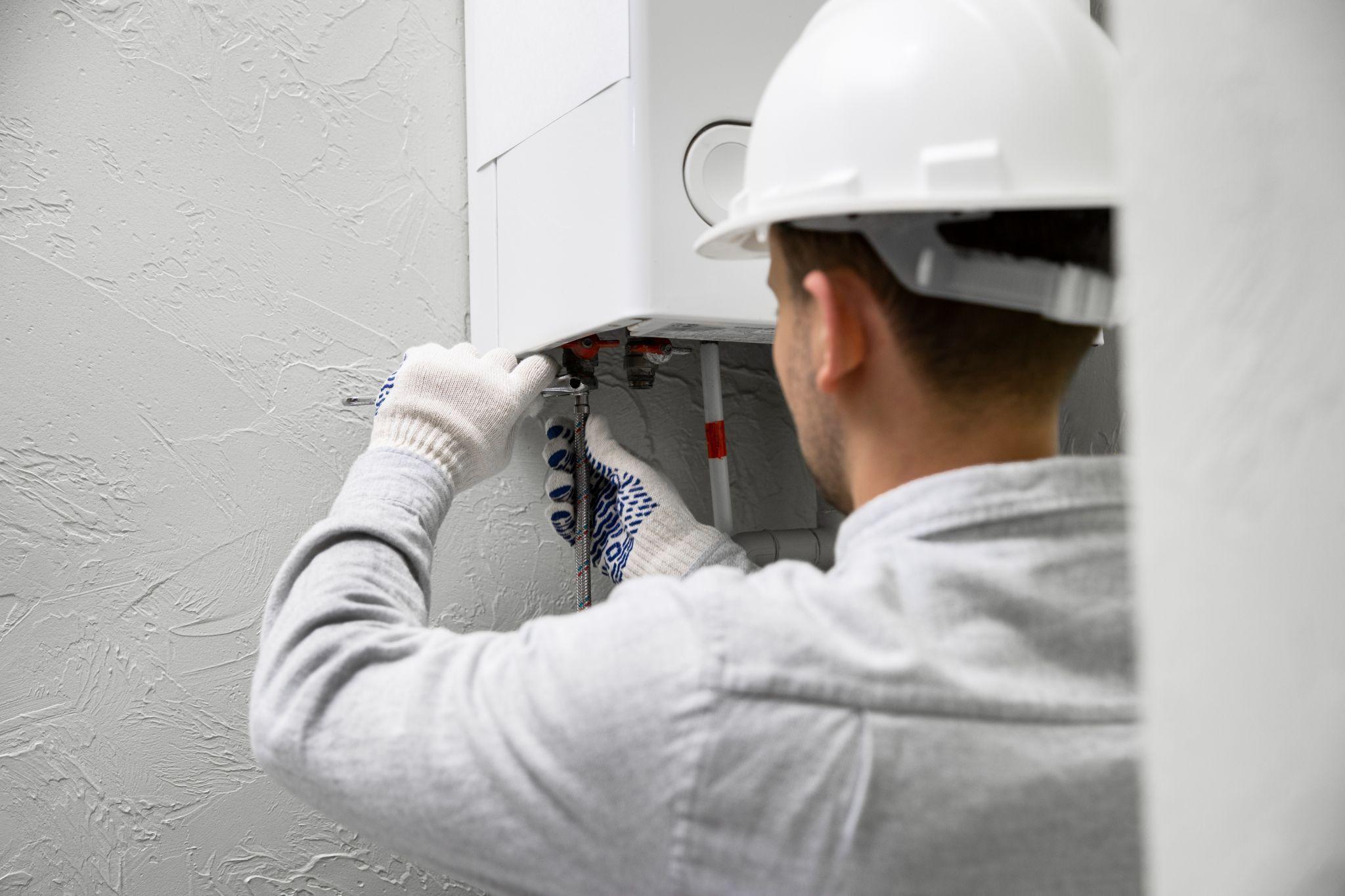In the US, water heating consumes approximately 20% of a household’s energy. Roughly, homes spend $24 billion on water heating alone. Worse, the process generates millions of tons of carbon (IV) dioxide.
If households embrace eco-friendly water heating appliances, they can tremendously reduce CO2 emission and save on energy.
Top environmentally friendly hot water heater
Undoubtedly, anyone needing to save on energy costs and preserve the environment should consider buying eco-friendly water heater solutions discussed in this section.
Tankless water heater
Tankless heaters give hot water on a need basis. They have super-heated coils which instantly heat water. That makes them super-efficient in terms of energy expenditure.
How it work
These heater will work if the need for water arise. The burner ignites upon sensing water flow, raising temperatures in the heat exchanger. In turn, the heat exchanger heats the water flowing over it.
STEP 1 – Turn On The Tap. This step is basic as you will need to press or turn a button or open a tap, depending on the system.
STEP 2 – Water-Flow Into The System. Once the water enters the system, it passes over a sensor, prompting the control panel to dissipate hot water.
STEP 3 –Control Panel Takes Over. The computer turns the fan on in gas systems, drawing in air. Also, it opens the gas valve, mixes the air and gas, and then ignites the burner to create heat for the heat exchanger—the water flowers directly to the heat exchanger in an electric heating system.
STEP 4 – The Heat Exchange Transfer The Heat To Water. As water circulates through the tubes, it draws heat from the exchanger until it reaches the needed temperature.
The tankless system shuts off and stops utilizing energy if you turn off the tap.
Pros
· Instant hot water
· Energy saving
· Space-saving due to compact form
· Minimal monthly because the decreased energy usage saves you money
Cons
· Higher purchase and installation cost
· Limited hot water supply, making it unsuitable for large households
Solar water heater
A solar heating system uses panels to get energy from the sun and pass it to the water. The panels trap energy from the sun and transfer it to the water via a closed-looped system connecting to a water tank. This then warms the water.
How it work
Solar water heaters come in different designs, which dictate how they work. Closed looped systems have a non-freezing liquid. The liquid captures heat from the sun and dissipates it to stored water. The energy from the sun heats the liquid in the solar collectors. The heated liquid passes via a heat exchange in the tank while transferring the sun’s heat to the water. The non-freezing liquid moves back to the collectors.
Pros
· Cost-saving in the long run as it uses the free sun energy.
· It uses the sun’s renewable energy.
· High-efficiency – the panels can absorb up to 80% of the suns energy
· Zero carbon footprint
· Tax incentive for using renewable heat
Cons
· Only functional in areas with plenty of sunshine
· High initial costs
· Requires a rooftop to hold panels
Condensing water heater
A condensing heater is typically a gas-fuelled water heater with a continuous flow. To increase its efficiency, it uses condensing technology.
How it work
A condensing heater has a storage tank like a conventional heating system. However, its heat exchanger has a larger surface area, condensing water from flue gases. This means it preheats water using ‘waste’ heat from flue gas.
This arrangement captures a lot of heat, improving its efficiency. Besides, it has a highly efficient burner, better insulation, and top-notch heat exchangers.
Pros
· Highly efficient thanks to efficient burners
· Produce high amounts of hot water
· Cheaper to run
· Environmentally friendly
· Ideal for cooler climates
Cons
· Initial setup costs are very high
· Complicated to set up and use as it requires some configurations in gas lines and venting system
· Susceptible to corrosion
Heat pump
The heat pump heater works without generating heat directly. Like a refrigerator, it transfers heat from one point to another using electricity. In turn, that makes warmer spaces warmer and cool spacers cooler.
How it work
These hybrid heaters use the heat in the surrounding air and the ground to warm the water in a tank. But they require electricity to move the heat from one point to another. That makes them twice or thrice efficient as conventional heaters.
The pumps are termed hybrid because they switch electric resistance heat automatically during high water demand periods. These pumps offer different operating modes based on the type of control panel. These are Auto/Hybrid(default), Efficiency/Economy, Electric/Heater, and Vacation & Timer.
Pros
· Low running costs
· Low carbon emissions
· Long lifespan/long term efficiency
· Provides cooling
· Less maintenance
· Better safety
Cons
· Not carbon neutral – they depend on electricity for seamless operation
· Complicated to install
· Long term sustainability in long term
Conclusion
Settling on the right water heating option can be an uphill task. You need to assess the need of your home and balance them with the features that a water heater system offer. Besides finding energy-efficient water heater solutions, look for the best installation services such as Handy Kith. Otherwise, you can easily find the best option for your case with all the necessary information.




